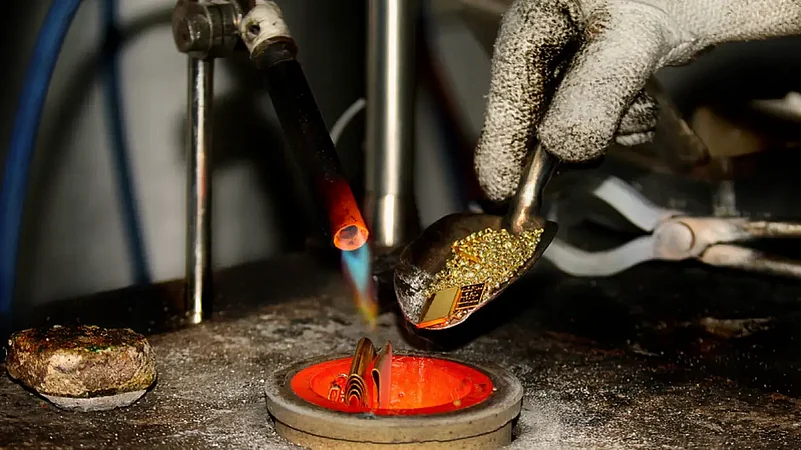The World Gold Council (WGC) has said that India’s gold refining landscape has changed notably over the last decade, with the number of formal operations increasing from less than five in 2013 to 33 in 2021. As a result, the nation’s capacity for organised gold refining has increased dramatically from just 300t in 2013 to an estimated 1,800t, the WGC said in a report titled ‘Gold Refining And Recycling’.
“India has the potential to emerge as a competitive refining hub, if the next phase of bullion market reforms promote responsible sourcing, exports of bars, and consistent supply of doré or scrap,” says Somasundaram PR, Regional CEO, India, World Gold Council.
The report said that recycling is an important component of gold supply, accounting for 11 per cent of the total Indian gold supply in the last five years. Key component for the recycling industry remains old bars and coins that people either sell or exchange for jewellery; which are estimated to make up about 10-12 per cent of the scrap gold supply. Lastly, industrial scrap, generated from end-of-life electronic products, accounts for less than 5 per cent of total Indian scrap supply, the report said.
“There are three sources of gold recycling: jewellery, manufacturing scrap, and end-of-life industrial scrap. Old jewellery scrap represents the largest source of recycling in India, with an approximate 85 per cent share of the total,” the report said.
The report, however, added that positive GDP growth in the same year and the previous year have pushed recycling down by 0.3 per cent and 0.6 per cent, respectively. In addition, a 1 per cent increase in jewellery demand has also pushed recycling down by 0.1 per cent.
What Are Key Drivers of Recycling in India?
The report, however, mentioned that despite being the fourth largest recycler in the world, India recycles little of its own stock of gold – about 8 per cent of the global scrap supply.
Recycling is driven by current gold price movements, and future price expectations and the economic backdrop, the report said, adding that according to its econometric analysis, in the short run, a 1 per cent increase in price pushes recycling up by 0.6 per cent.
The WGC report added that accredited refineries need to be able to show a clear source for the scrap they buy, as they prefer not to purchase with cash and to work only with organised jewellers or bullion dealers.
This leaves out small jewellers, who prefer cash transactions. That said, many refineries have opened additional scrap collection centres, but these are still few and far between, and often located in bigger towns or cities.
“As a result, the process of sending scrap to a refinery can be cumbersome and more time-consuming than melting it locally,” the report said.
“The domestic recycling market, driven by local rupee prices and economic cycle, is relatively less organised, but should gain support from initiatives, such as revamped Gold Monetisation Scheme (GMS), as various policy measures sync to make it attractive to bring surplus gold mainstream and liquidity is enhanced via bullion exchanges,” PR adds.
“Our report also highlights that the holding period of jewellery will continue to decline as younger consumers look to change designs more frequently; a trend that could contribute to higher levels of recycling. On the other hand, higher incomes following stronger economic growth will reduce outright selling, and consumers will find it easier to pledge their gold rather than sell it outright. It is, therefore, necessary to support organised recycling with better incentives and tech-based solutions encompassing gold supply chain end-to-end,” he further says.
The report further said that the current GST regulations do not allow consumers to reclaim the 3 per cent tax they would have paid when they initially bought their jewellery. This loss could be a barrier to consumers looking to create liquidity by selling old gold.























.png?w=200&auto=format%2Ccompress&fit=max)






